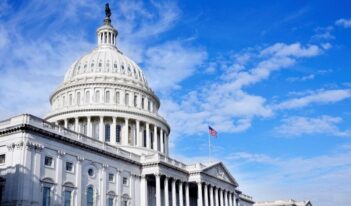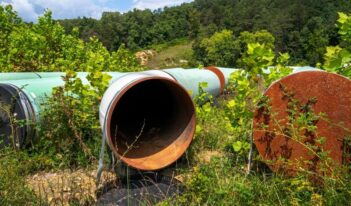
The impacts of agency’s decision to end voluntary regulatory compliance programs may be difficult to evaluate.
Today the New York Times and Greenwire report that the U.S. Environmental Protection Agency (EPA) “may cut back some of its many voluntary programs in an effort to funnel resources toward regulations.” Over the past twenty years, EPA has established dozens of voluntary programs seeking to encourage businesses to improve their environmental performance even beyond what they are required to do by law. Such programs include the well-known Energy Star program as well as lesser known programs like the Voluntary Aluminium Industrial Partnership or the Landfill Methane Outreach Program.
Shortly after EPA Administrator Lisa Jackson took office in 2009, she disbanded what had been EPA’s flagship voluntary program, the National Environmental Performance Track. Performance Track, established by President Clinton’s EPA Administrator Carol Browner, recognized and rewarded companies that deployed systematic environmental management practices and made environmental commitments over and above compliance with existing regulations.
In today’s news report, Assistant EPA Administrator for Air Gina McCarthy states “that we’ve made tremendous progress with the voluntary programs, but if we’re going to begin to regulate more effectively, some of the voluntary programs may no longer be the priority.” The report also quotes one of McCarthy’s predecessors at the head of EPA’s air office, Jeffrey Holmstead, who served under President George W. Bush, as stating that “there are some voluntary programs that are quite successful.”
How successful are such voluntary programs? The fact that these programs are voluntary makes them hard to evaluate, as the types of companies that join them may well have been more environmentally committed from the outset. All the observed differences between participating and non-participating firms probably cannot be attributed to the programs themselves, as PPR Director Cary Coglianese noted in a recently co-authored paper published in the Environmental Law Reporter.
In another paper recently published in the Annual Review of Environment and Resources, Coglianese and his co-author Jonathan Borck review the social science research on voluntary environmental programs (VEPs) and conclude that, to date, the research indicates that even successful VEPs can have “but limited effects on pollution levels, and consequently, conventional or market-based forms of regulation will presumably remain necessary to achieve greater reductions at polluting facilities.” They write:
“The relationship between VEPs and mandatory regulation is widely acknowledged, even if little studied, because VEPs are often proposed as alternatives to traditional forms of environmental policy. It is even sometimes noted that firms can strategically exploit VEPs to try to stave off the imposition of future regulations. For example, some facilities that participated in EPA’s Strategic Goals Program (SGP) apparently viewed their participation in the program as an attempt to forestall new water pollution and hazardous waste regulations. Firms presumably prefer VEPs to new regulations owing to their voluntariness and flexibility, which means any actions they take to address environmental or natural resource problems should be less costly than with mandatory rules.
For this same reason, VEPs should be preferred from the standpoint of overall welfare, at least if they achieve the same benefits at lower costs. The question then becomes whether they can be expected to achieve the same benefits. If environmental problems are truly externalities, it is not obvious that the average environmental benefits per participant from a voluntary program will be as high as the average environmental benefits per regulated entity from mandatory regulations. Of course, we should never assume that the promulgation of a mandatory regulation will ensure full compliance with its terms. Regulatory noncompliance is a persistent condition. Nevertheless, the risk of significant civil and criminal penalties probably can motivate action in a way that a certificate of recognition from a VEP cannot. Morgenstern & Pizer “find it hard to argue for voluntary programs where there is a clear desire for major changes in behavior.”
Even if VEPs can and do induce the average participant to make changes comparable to those made by the average regulated entity, there are far fewer participants in VEPs than there are polluting facilities that could be made subject to regulation. If effectiveness is a function of the number of affected organizations as well as the extent to which they lower their pollution levels, then even if the latter is held constant, the number of affected organizations is still usually much lower with a voluntary program. Usually, only a small fraction of the eligible facilities participate in a VEP, whereas regulations apply across the board to all relevant organizations.
A VEP that had substantial spillover effects, of course, could begin to resemble a mandatory regulation in terms of the scope of its impact. [Spillover effects are those effects a VEP has on other businesses and entities that do not participate in the program.] But there is reason to suppose that regulation has its own spillover effects that may be equal in magnitude to—or even greater than— the spillover effects from a comparable VEP. In fact, we may expect that regulations would travel even better down the two avenues by which spillover effects arrive. Regulation generally provides information to managers about best, or at least good, practices—namely, those required by regulation. Furthermore, firms face pressures from employees, investors, consumers, and others to comply with the law that are likely to be at least as strong as pressures to go beyond compliance with the law. An entire cottage industry of lawyers, consulting firms, and insurance companies exists specifically to inform companies of their regulatory obligations and help them comply with them.
Researchers have recognized the ability of regulation to induce firms to make environmentally beneficial investments. In their study of pulp and paper mills, for example, Gunningham et al. indicate that regulation led mill owners to make investments that over time have significantly reduced their water pollution. Of course, factors other than regulation may explain long-term trends in the developed world even better, such as the large-scale shift in manufacturing industries to developing economies. More research is obviously needed, as we know of no analysis that directly compares the efficacy of VEPs to that of regulation.”
More data will be needed to conduct further research on the effectiveness of voluntary programs. Unfortunately, as Coglianese notes in another recently co-authored paper published in the Ecology Law Quarterly, “Governments have not been collecting the data needed to be able to determine whether [many voluntary programs] are truly making a difference in achieving their goals.”
The photograph of EPA Administrator Lisa Jackson is used unaltered under a Creative Commons license.



